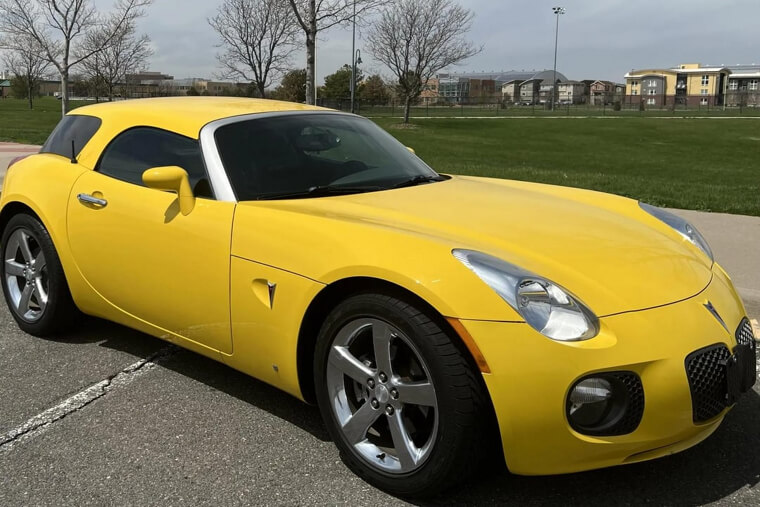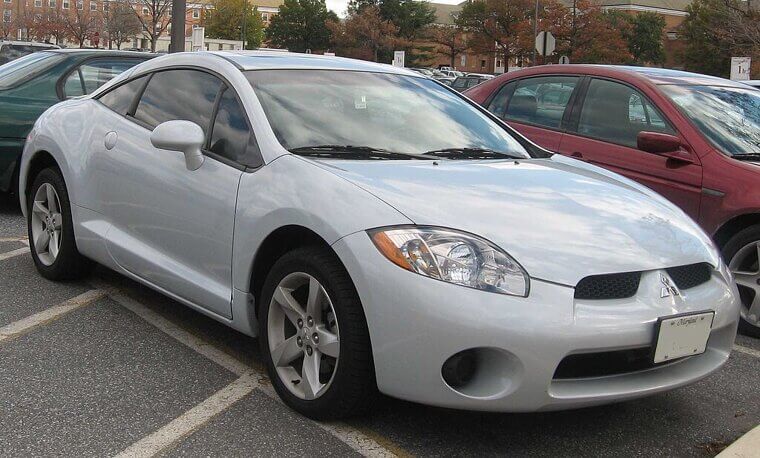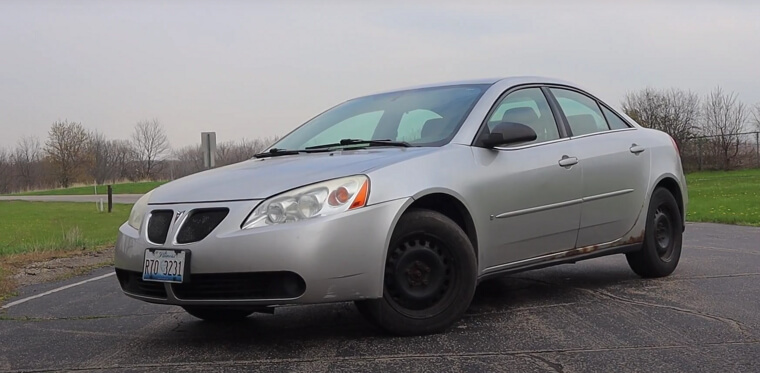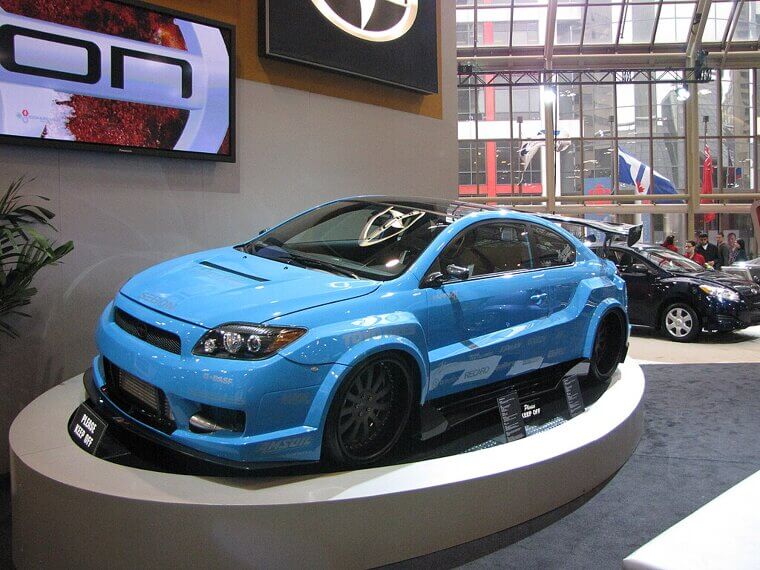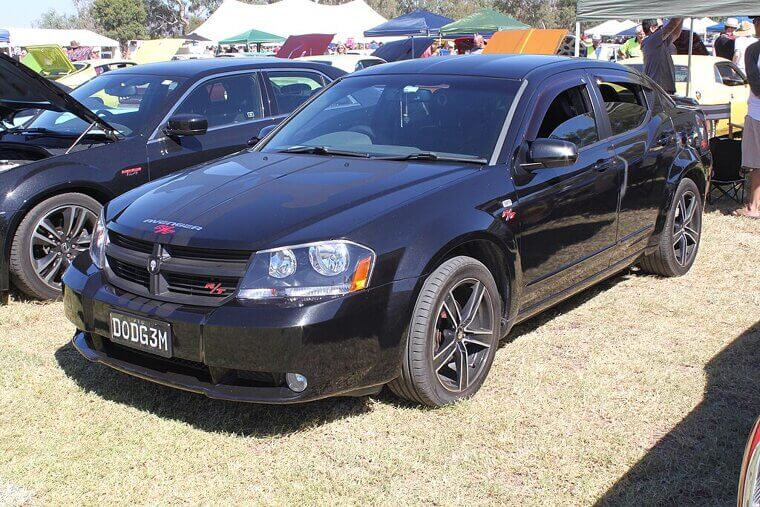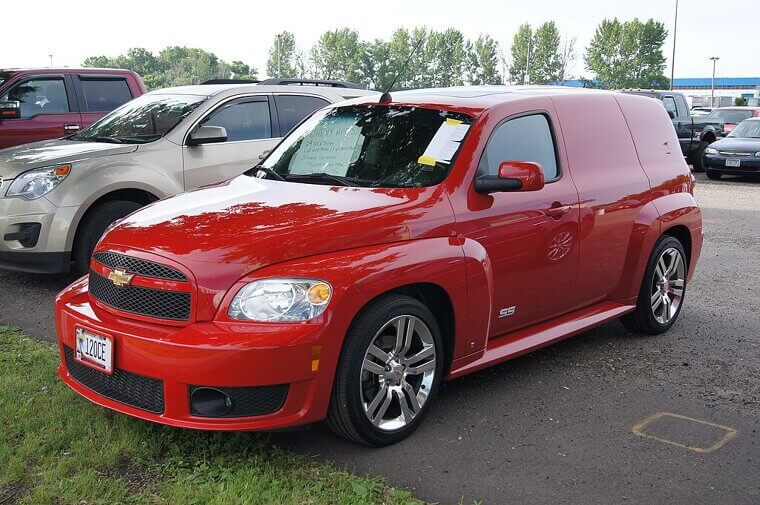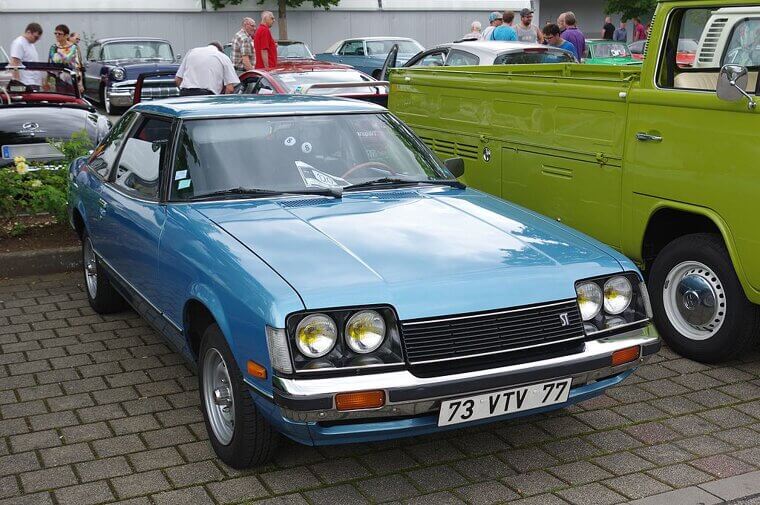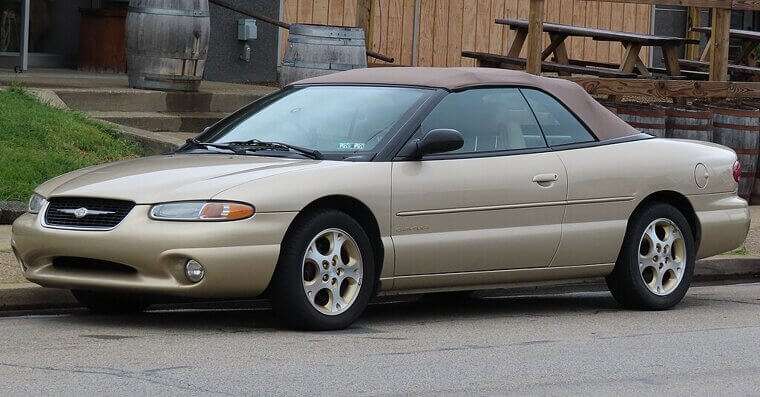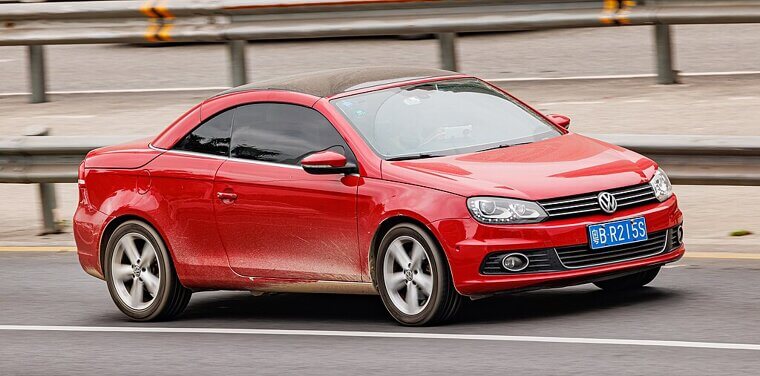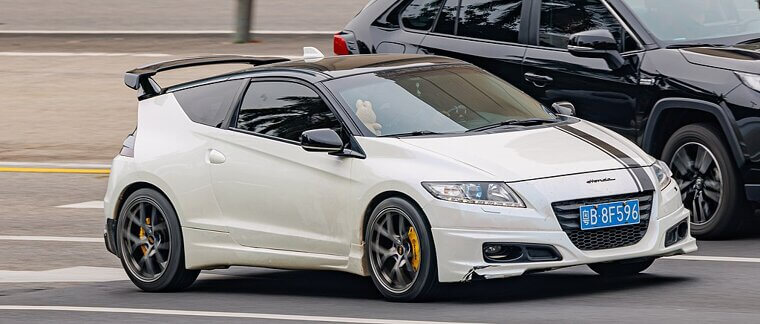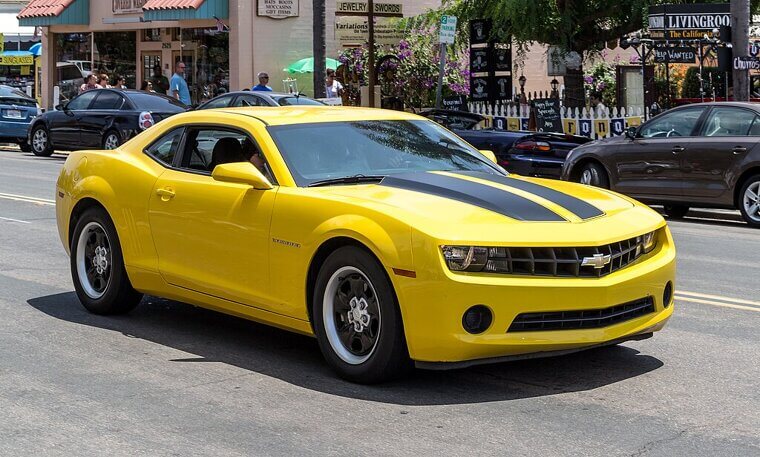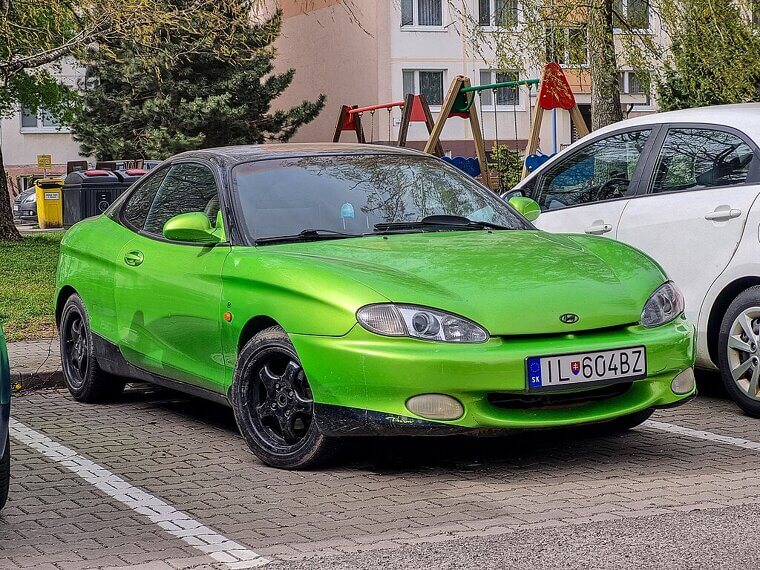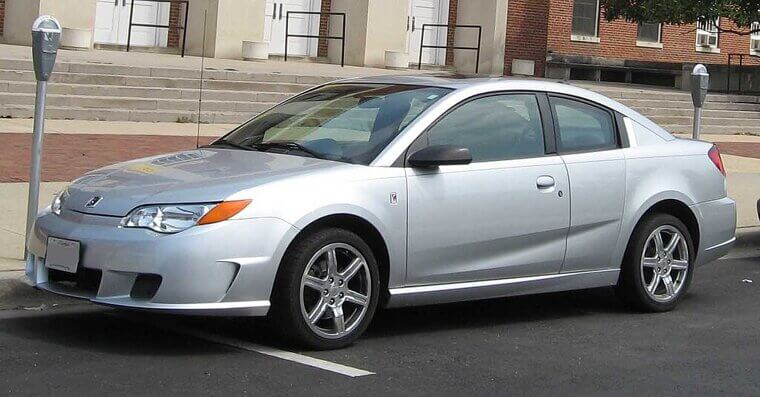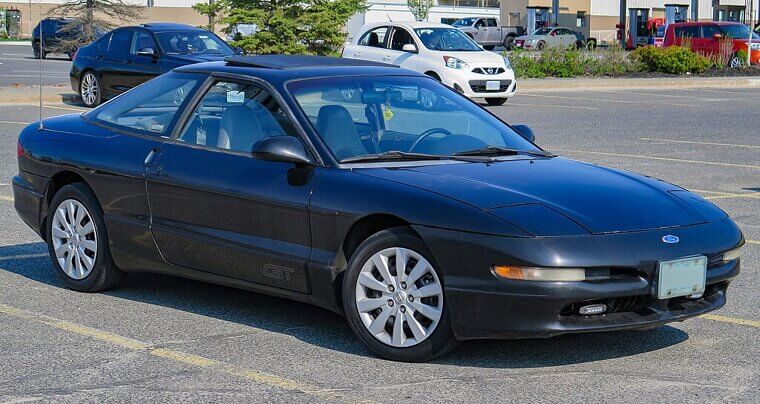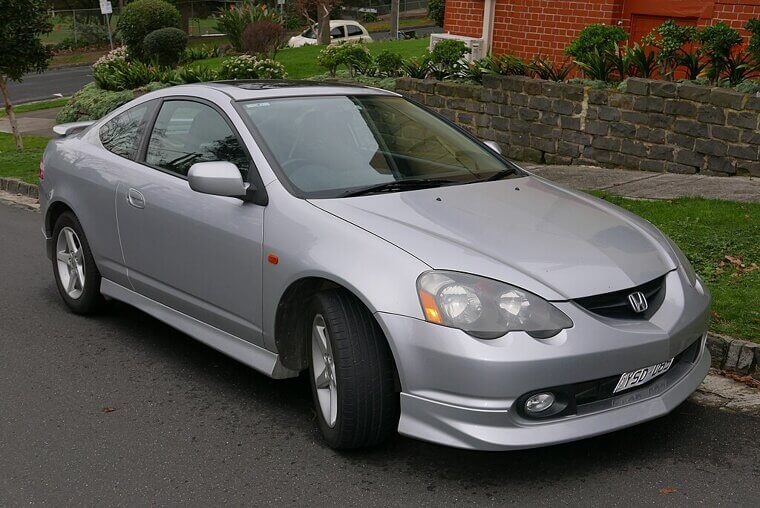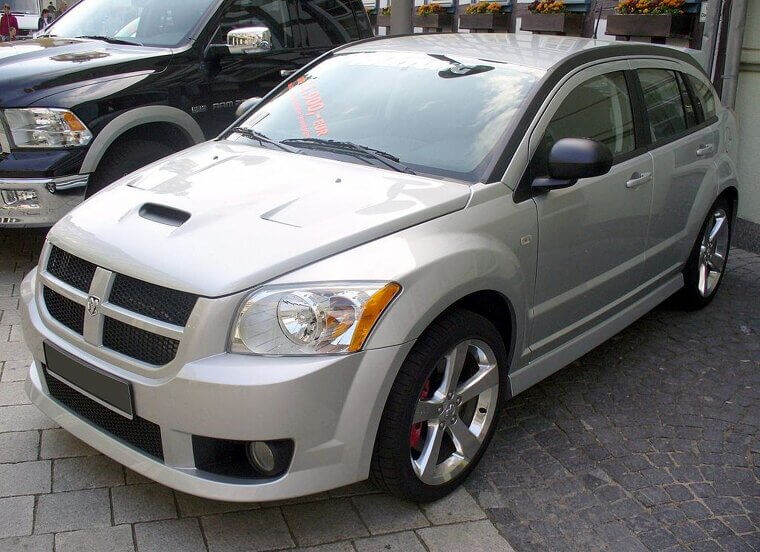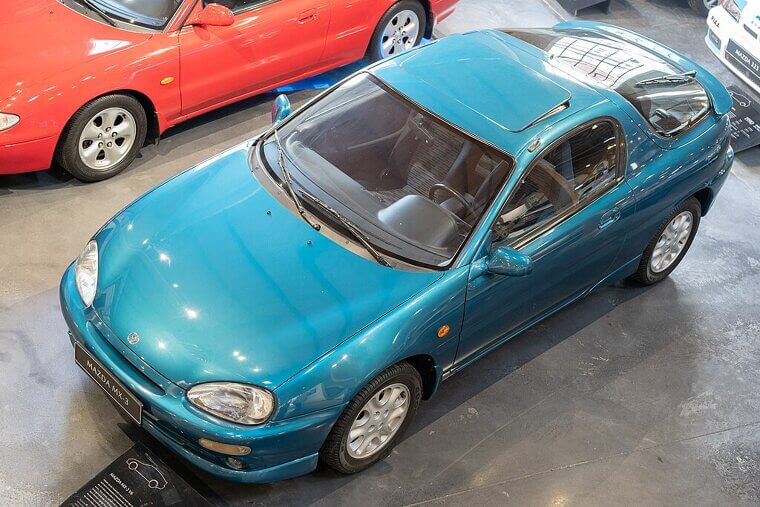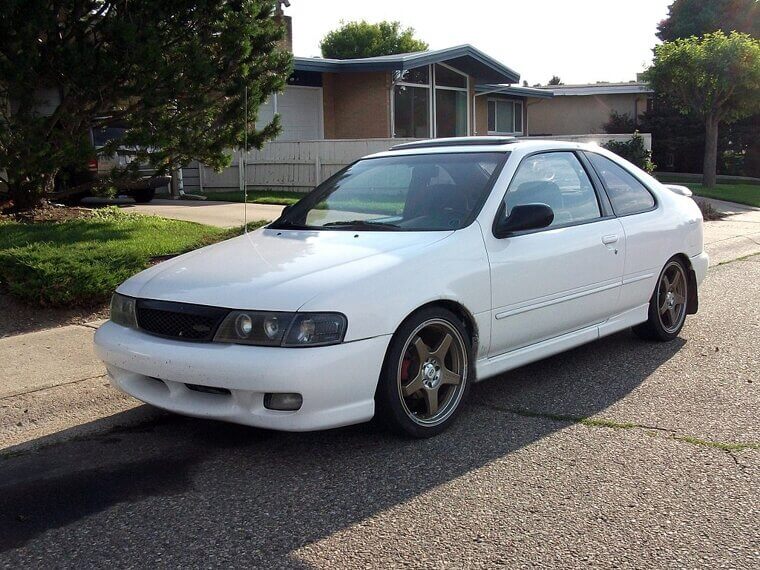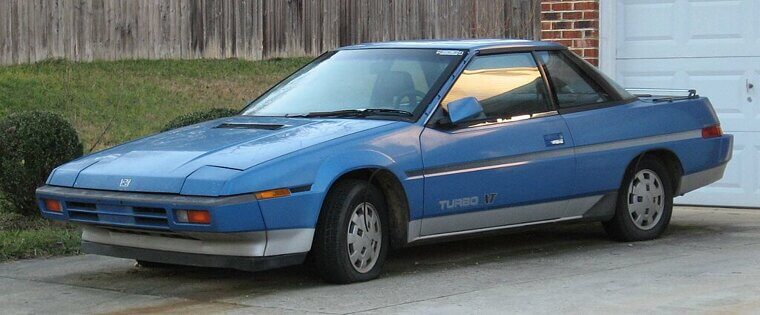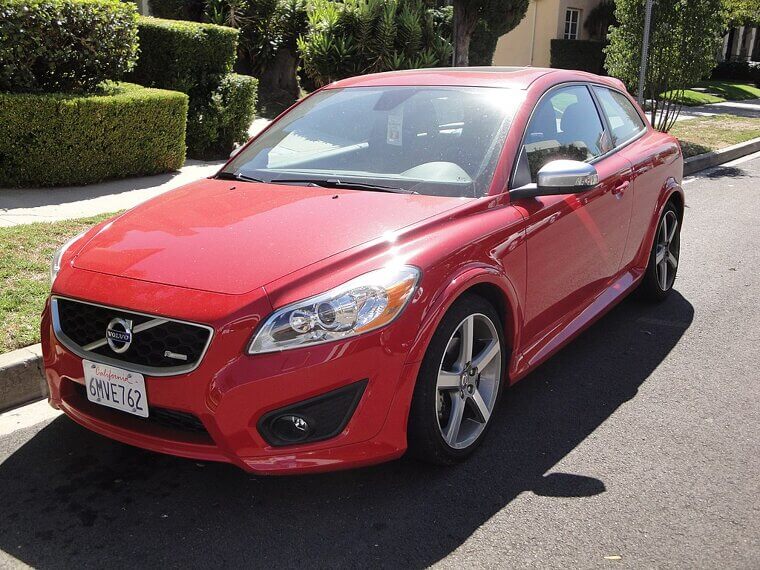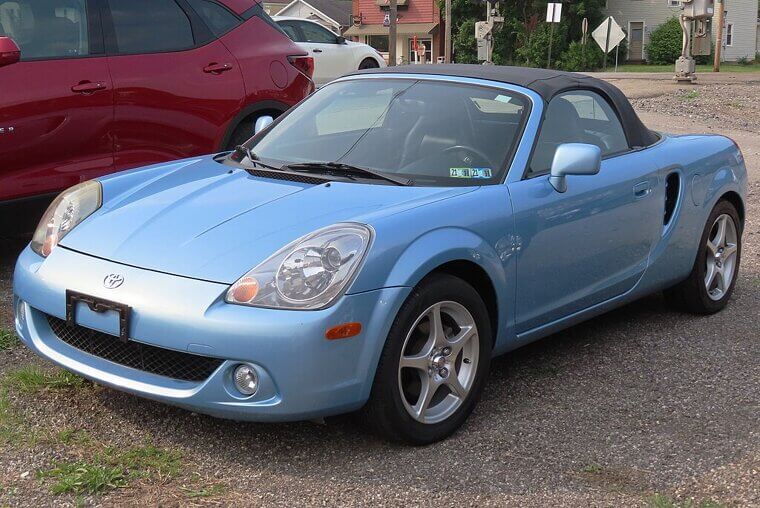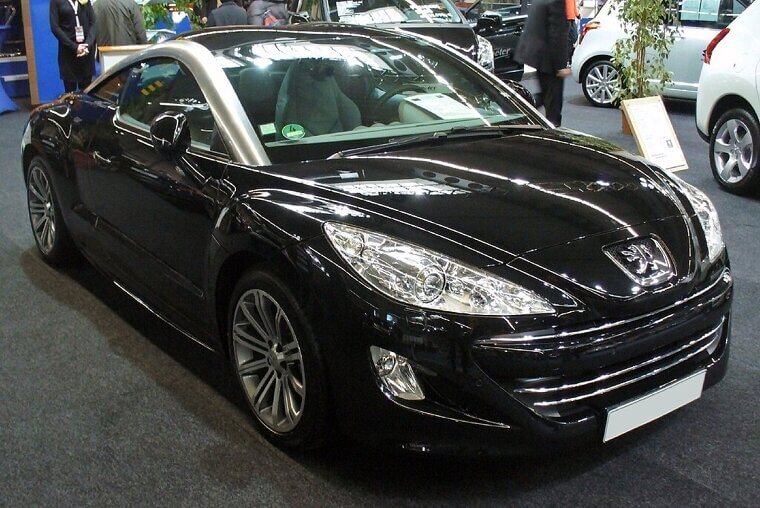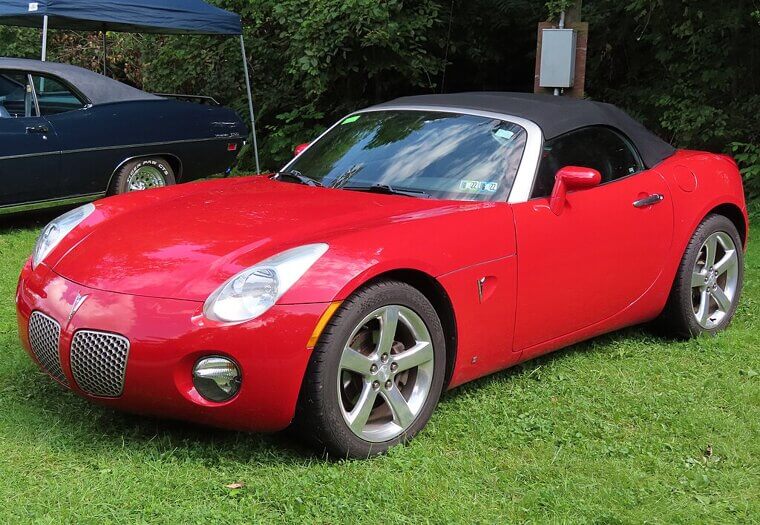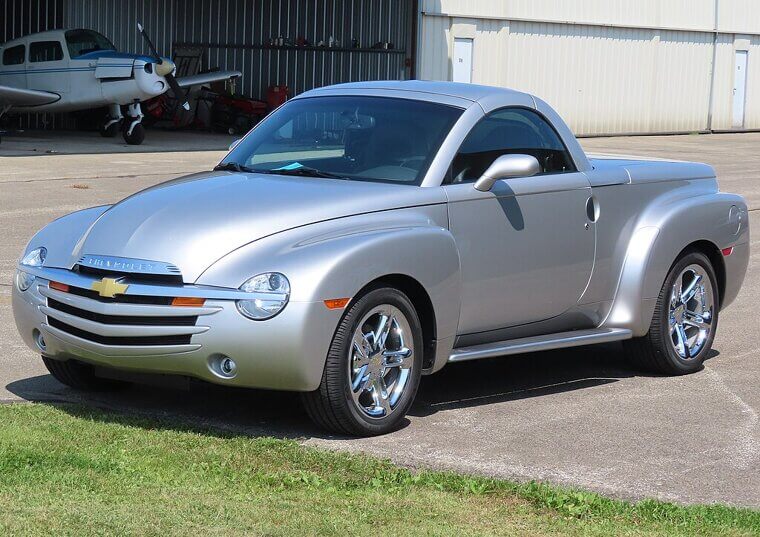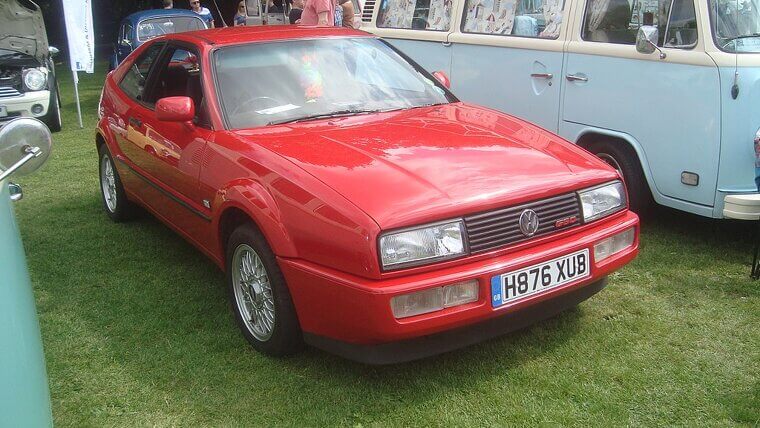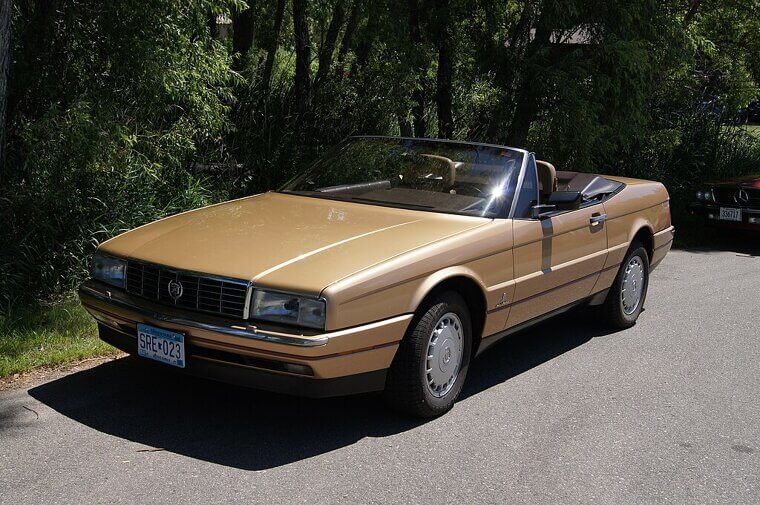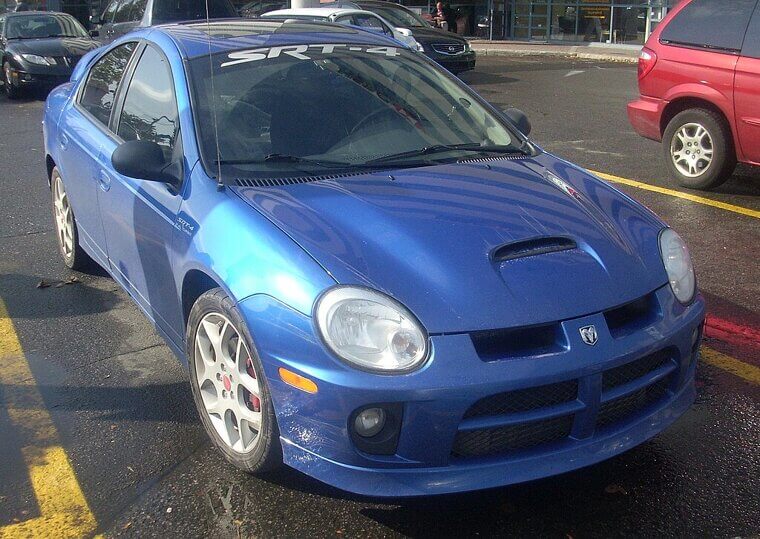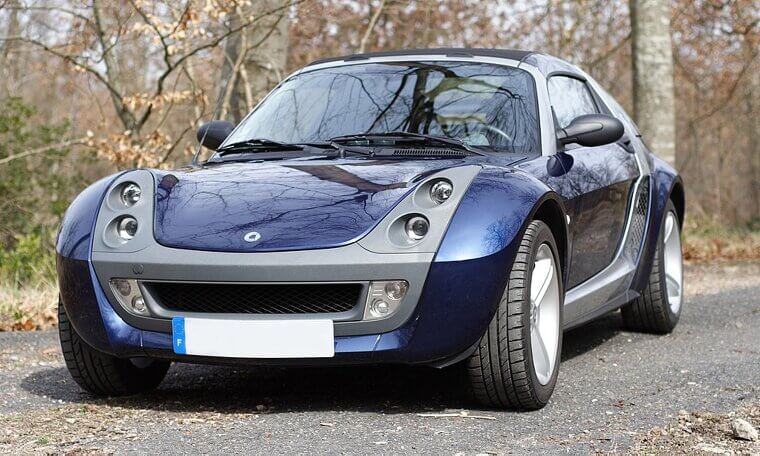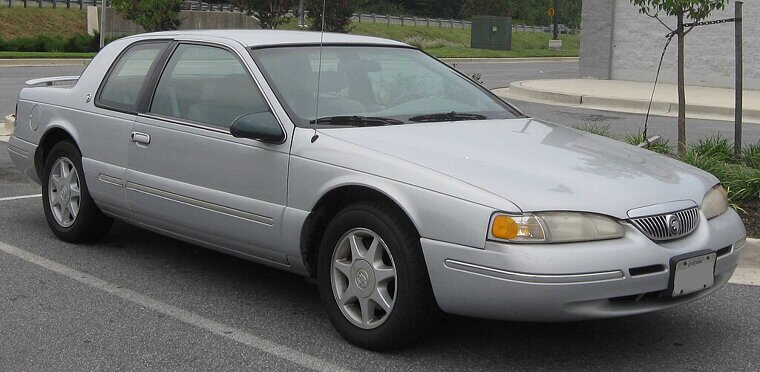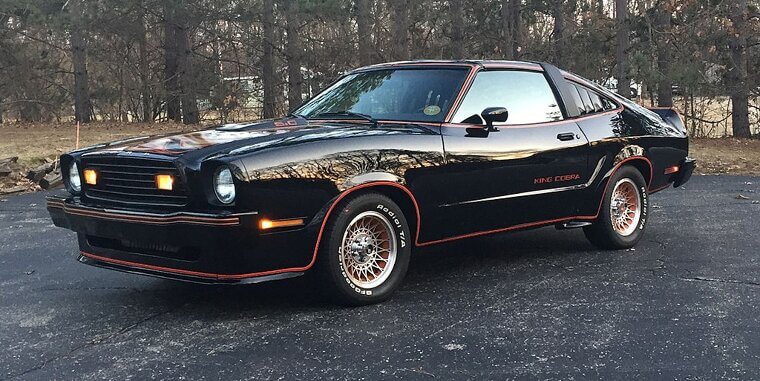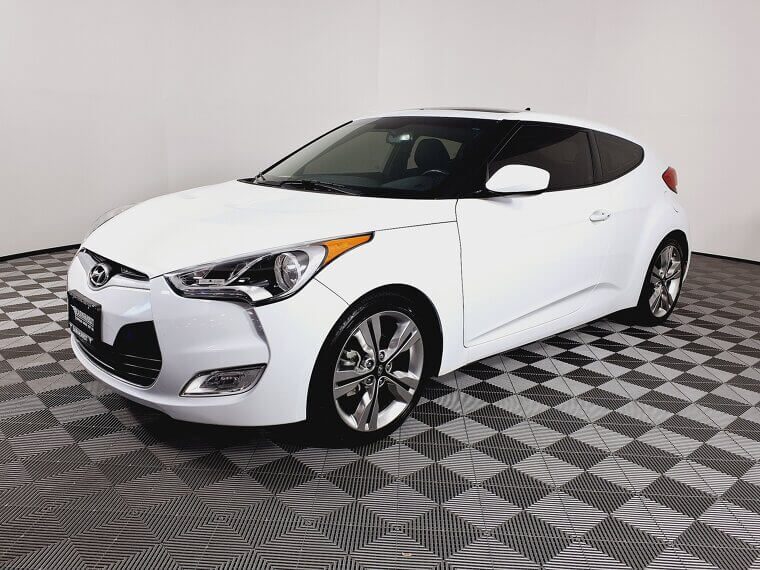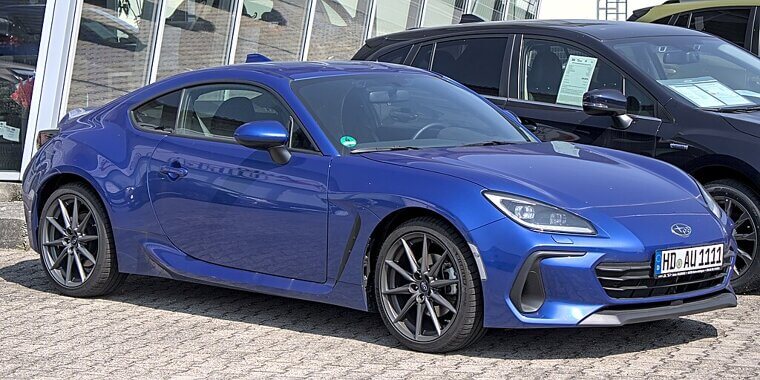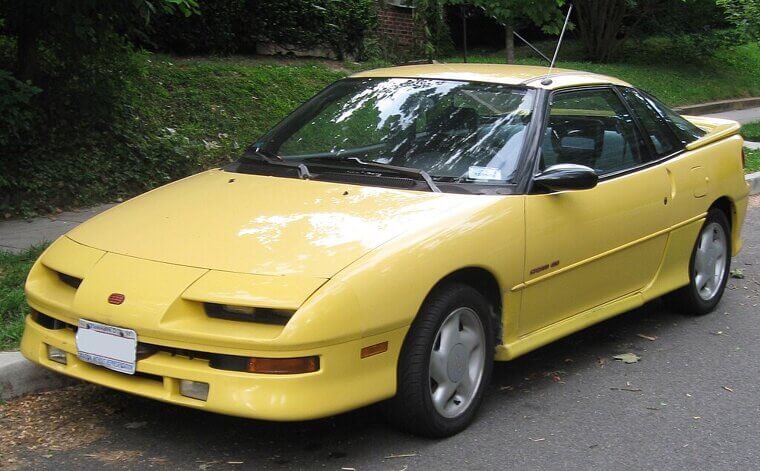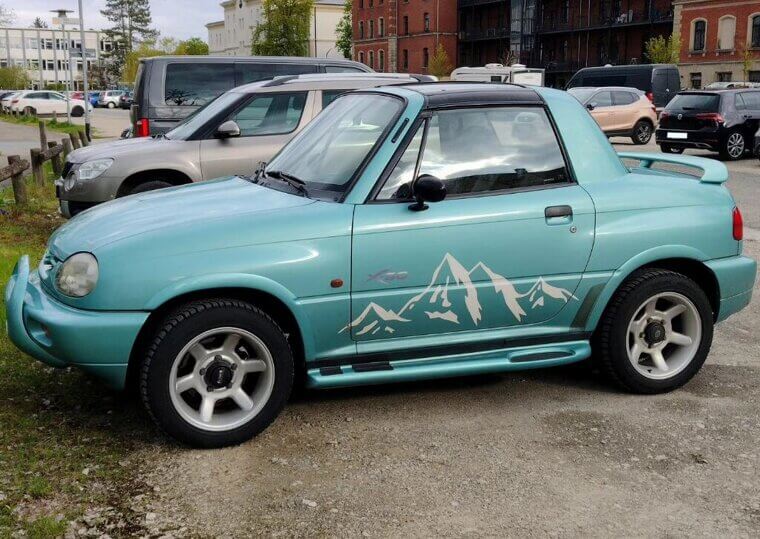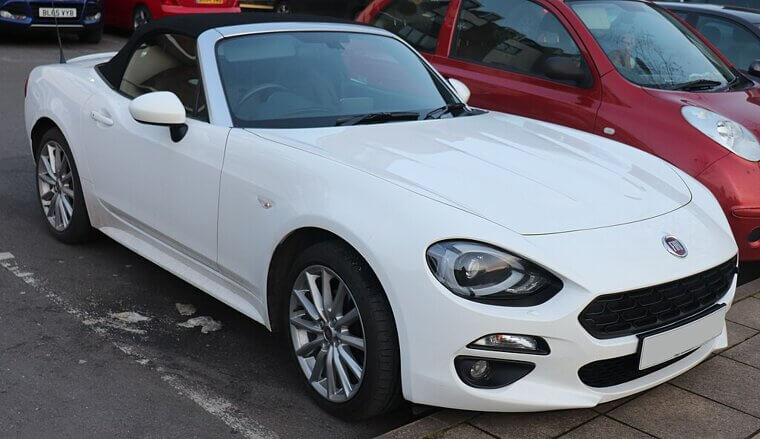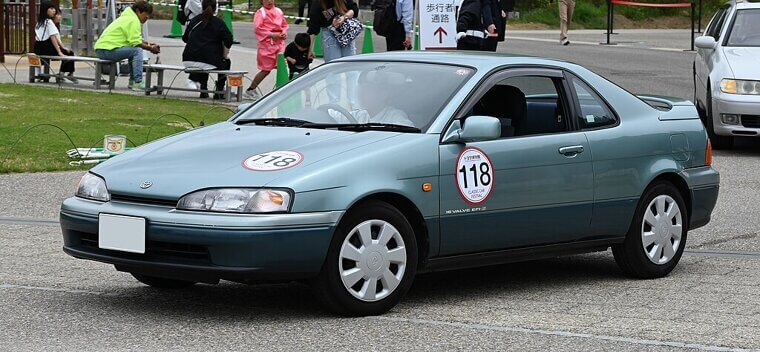Speedy Looks, Sluggish Performance
They’ve got the spoilers, the scoops, and the sporty styling, but once you hit the gas, it’s all bark and no bite! 35 cars may look ready for the racetrack, but in reality, they fall short of their go-fast promises.
Mitsubishi Eclipse (4th Gen, 2006–2012)
The fourth-generation Eclipse looked like a tuner’s dream with its aggressive design, hood bulge, and wide stance; unfortunately, it traded turbocharged excitement for front-wheel drive and a heavy frame. Even the V6 version felt sluggish compared to its 1990s predecessors, so the Eclipse has lost its time in the sun.
Pontiac G6 GTP Coupe (2005–2009)
Although its name suggested speed, the G6 GTP was writing a visual check it couldn’t cash! It had sharp lines and dual exhausts, yet its driving quality was mired by the front-wheel drive and a clunky automatic transmission. Ultimately, it was more about appearances than performance.
Scion TC (2005–2016)
The tC came with sporty bodywork, panoramic sunroof, and aggressive wheels, but under the hood its naturally aspirated, four-cylinder engine just left enthusiasts wanting more. It was more commuter than canyon carver, no matter how aggressive the marketing tried to make it look.
Dodge Avenger R/T (2008–2014)
Dodge tried to dress the Avenger up in muscle car cosplay, but even the R/T version struggled to back up its mean aesthetic. Despite an aggressive name, it was underpowered, heavy, and delivered a driving experience as sloppy as a chimp’s tea party.
Chevrolet HHR SS (2008–2010)
Despite it boasting a turbocharged engine and sporty badges, the HHR SS somehow still felt more like a mismatched parts bin than a performance car. The retro wagon styling made it look cool (in a weird way), but behind the wheel, it just wasn’t very exciting.
Toyota Celica (7th Gen, 1999–2006)
The last-generation Celica had sharp angles and a race-inspired aesthetic, so on the surface it could convince drivers it had the speed to match. Unfortunately, most trims were modestly powered, and even the GT-S (complete with Yamaha-tuned components) struggled to feel truly fast.
Chrysler Sebring Convertible (1996–2010)
Even though it wore sporty wheels and sleek lines, driving the Sebring was more about wind noise than a quality driving experience. Perhaps it was the soft suspension or the uninspiring powerplants, but either way it promised flair while delivering very little firepower.
Volkswagen Eos (2006–2015)
This convertible coupe had an elegant and athletic figure, yet it was more cruiser than sprinter. The Eos was heavier than you might expect and it lacked any real engine punch, so it was better at roof tricks than track tricks.
Honda CR-Z (2010–2016)
Honda pitched the CR-Z as a sporty hatchback, and it rode its own hype with a racy hatchback shape, but it couldn’t live up to its own promises. Even with a manual transmission, it leaned more into economy than excitement - especially when compared to its spiritual predecessor, the CRX.
Chevrolet Camaro (V6 Base Models, 2010–2015)
Although it looked every bit the muscle car, the entry-level V6 Camaros from the 2010s were all show and no go. The base engine didn’t match the aggressive styling or heavy curb weight, leaving drivers with a lethargic whisper when they expected more grunt.
Hyundai Tiburon (1996–2008)
The Tiburon rocked up to the party with its sharp design and dual exhausts, but under the hood, it had all the attitude of a bored accountant - it lacked any punch, especially early models. It promised sports coupe thrills and mostly delivered basic coupe chills.
Saturn Ion Red Line (2004–2007)
Built as a performance version of the humble Ion, the Red Line had sporty ambitions and a supercharged engine, but it handled like a wet noodle, its interior was awkward, and its uninspiring steering made it feel more like a flatline than a red one!
Ford Probe GT (1989–1997)
The unfortunately-named Probe (Ford leaned into that) had an aerodynamic design and GT badging, so it promised performance. However, even in its best form it lacked the speed and dynamics to compete with true sports cars, so it was more futuristic-looking than genuinely fun to drive.
Acura RSX Base Model (2002–2006)
The Type-S was a performer, and while the base RSX looked just as slick, it didn’t have the performance to match. It had style, but marshmallow-soft suspension and underwhelming power held it back from being the thrilling sport compact it was aspiring to be.
Dodge Caliber SRT4 (2008–2009)
Even with its aggressive bodywork, big wheels, and turbocharged power, the Caliber SRT4’s clunky chassis and plasticky interior made it feel more like a straight-line sprinter than a balanced performance machine. It was a hot hatch on paper; in practice, it was a firing blanks.
Mazda MX-3 (1992–1998)
The MX-3 rolled along the blacktop with a sleek silhouette and even V6 options,ready to impress the waiting drivers. When they sat in the driver’s seat, the disappointment was palpable. Its power was lacking and the handling average at best, so it had the looks of a sports coupe rather than the heart of one.
Nissan 200SX SE-R (B14, 1995–1998)
The SE-R badge promised excitement and the 200SX wore a pseudo-sporty face, but under the chassis was the bones of a Sentra, and it drove like one, too. It lacked the athleticism of earlier SE-Rs, making it an exercise in styling over substance.
Subaru XT (1985–1991)
The XT’s wedge shape and pop-up headlights gave it the look of a futuristic performance car. It had a pile of other issues though, such as its quirky engineering, underpowered engine, and dated handling dynamics. It never really delivered the thrills its design promised.
Volvo C30 T5 R-Design (2007–2013)
It had the flared arches, aggressive stance, and turbocharged badge, but the C30 under-delivered on everything but its chassis. Sure, it was solidly built, yet the driving experience was more plush than punchy, so fans didn’t get the bang they expected for their buck.
Toyota MR2 Spyder (ZZW30, 2000–2007)
The MR2 Spyder delivered on a mid-engine layout and a sweet convertible style, but Toyota stunted its power, kept its output low, and gave it vague steering. Its flex was purely for show, and sadly this Spyder didn’t have big enough fangs to deliver the real bite drivers wanted.
Peugeot RCZ (2009–2015)
This stylish coupe looked like a European Audi TT rival, complete with double-bubble roof and aggressive stance. It was a visual thrill, and apparently only skin-deep. Its modest power output and wishy-washy handling made it a visual treat to onlookers, but lackluster for those behind the wheel.
Pontiac Solstice Base (2006–2009)
With its curvy, roadster design, the Solstice turned heads. But the base model’s naturally aspirated engine didn’t match its looks, and it didn’t make hearts skip a beat! It lacked low-end grunt, and the handling didn’t feel as refined as competitors like the Miata, leaving drivers disappointed.
Chevrolet SSR (2003–2006)
It looked like a retro hot rod pickup, but the SSR was more quirky than quick. Despite a V8 option in later models, the early versions were too heavy and handled more like a cruiser than a corner carver. It was definitely a head-turner, just not the expected back-road bruiser.
Volkswagen Corrado G60 (1988–1993)
This coupe had sleek styling and sport aspirations, but the G60 supercharged version was plagued with reliability issues and laggy performance. The later VR6 improved things, but the G60 often felt like a fast car stuck in slow motion.
Cadillac Allanté (1987–1993)
Styled by Pininfarina and marketed as a Euro-fighting grand tourer, the Allanté looked the part, but its front-wheel-drive layout and uninspiring V8 engine meant it couldn’t match the dynamics of its European rivals. It had Luxury, but it wasn’t as sporty as it pretended.
Dodge Neon SRT-4 (2003–2005)
It had the power, and it looked aggressive, but the Neon SRT-4 also had an interior lifted straight from a rental fleet and handling that felt like raw cookie dough. It was fast in a straight line but it lacked polish, making it more impressive on paper than pavement.
Smart Roadster (2003–2006 Outside the U. S. )
With its low-slung design and sporty flair, the Smart Roadster seemed like a go-kart for the streets. However, its spirited driving potential was mired by a tiny engine and awkward automated manual gearbox, creating a sluggish, jerky affair. It was fun to look at, not to drive.
Mercury Cougar (1999–2002)
The final Cougar had modern lines and sporty pretensions, but Ford’s platform shared roots with sedans not sports cars, leaving it declawed. The result was dull steering, underwhelming performance, and lots of visual promise with little actual payoff.
Ford Mustang II Cobra (1976–1978)
The Cobra badge should mean performance, but it was different in the ’70s. The Mustang II looked racy, but emissions-era engineering bogged down its performance. Its asthmatic V8 and wallowy suspension was all stripes and no substance.
Hyundai Veloster (Base Models, 2011–2022)
The Voloster had funky three-door design and sporty marketingas if it was ready to play! The base engine lacked power though, while the suspension tuning leaned toward comfort over control. Without the Turbo, it never lived up to its hot-hatch image.
Subaru BRZ / Scion FR-S (Pre-2022)
Lightweight and rear-wheel drive, these coupes looked like proper performance machines. Unfortunately, the underpowered engine and lack of torque let down many enthusiasts. They handled well and looked fast standing still, but never lived up to expectations.
Geo Storm GSi (1990–1993)
Sharp looks and a sporty name helped the Storm stand out, but even in GSi trim, it was more of an economy car than a performance coupe. Its handling was decent; its modest acceleration let it down, so it was more of a storm in a teacup.
Suzuki X-90 (1995–1997)
It had the roofline of a sports car and the body of a tiny SUV - none of which translated into performance! The X-90 was slow, awkward to drive, and confused about what it wanted to be. It was weird, but definitely not fast.
Fiat 124 Spider (Modern, 2016–2020)
It shared bones with the Mazda MX-5 and wore Italian styling, but the Fiat’s turbocharged engine lagged in response, and its tuning didn’t always match the promise of its silhouette. It came close to greatness, but just missed the mark.
Toyota Paseo (1991–1999)
The Paseo had coupe curves and sporty branding, but it was built to sip fuel, not burn rubber. Underpowered and softly sprung, it was more style over performance. It was a great commuter; just don’t expect much sizzle.

